We’ve had to say goodbye to some iconic tourist attractions in our lifetime because, sadly, not all have been preserved for posterity. Our world is packed with incredible sights to see. But, as the following locations prove, there are some experiences that money can’t buy, ever again. We’re taking a look at some travel hot spots from yesteryear that have now been wiped off the map.
Over the centuries, both mankind AND Mother Nature have wreaked havoc on some beloved landmarks, from natural wonders to luxurious theaters. So, we’re here to remind you of 22 of the most remarkable attractions that have been lost forever.

Wawoma Tree, Yosemite National Park, California
A tunnel was carved through a 2,100-year old sequoia tree in Mariposa Grove in 1881, and by the late 1910s, this attraction became a must-see with tourists wanting to be pictured driving right through the 234ft high natural wonder. But during the severe winter of 1969, the weather brought heavy snow weighing down the tree and toppled to the ground.
However, it’s likely the tunnel itself was also a significant factor in its downfall. While you can still find a carved tree in Tuolumne County, no new tree tunnels have been cut, to preserve Mother Nature.
Buddhas of Bamiyan, Afghanistan
The tallest in the world, two mammoth Buddha statues once looked out from a sandstone cliff in Bamiyan. They were carved sometime in the 6th century, the tallest being at 180ft. Unfortunately, in 2001, the Buddhist effigies were destroyed by the Taliban.
Today empty alcoves remain on the cliff where the attraction used to be, and the valley was labeled a UNESCO World Heritage Site in 2003. The closest the monuments have come to being restored is a hologram projected in the spaces they once stood.
Duckbill Rock Formation, Oregon
Named for its likeness to a duck’s bill, this rock formation once drew many tourists to the Cape Kiwanda State Natural Area. The sandstone hoodoo stood around seven feet tall and had most likely occupied its coastal spot for millions of years. But, in 2016, the natural attraction was destroyed.
A video of vandals pushing the monument until it collapsed and crumbled emerged quickly after. Even though the famous formation is gone today, Cape Kiwanda still pulls in visitors with its sweeping views of the Pacific and its hiking and hang gliding possibilities.
Sutro Baths, San Francisco
If you picture San Francisco, attractions such as the Golden Gate Bridge or Alcatraz Island might spring to mind. But the city was once home to the world’s largest indoor swimming pool!
The impressive complex included six saltwater and one freshwater pool, with a capacity for 10,000 swimmers. After a financial struggle for many years, the Sutro Baths closed in 1966 and later burned down. The foundations remain now, a reminder of the Victorian attraction, with the cliffside setting making the site a popular spot for strolls.
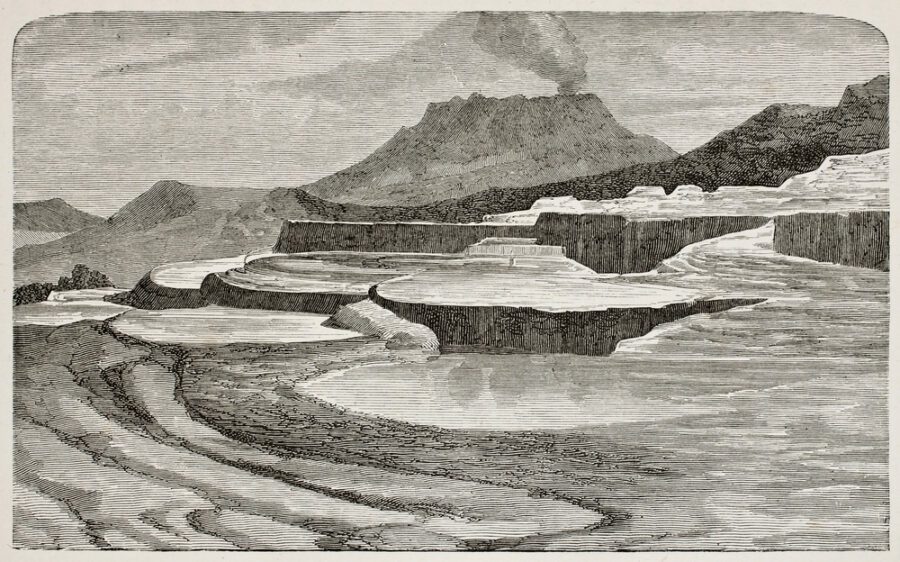
Pink and White Terrace, Lake Rotomahana, New Zealand
In the mid-19th century, these impressive naturally formed cascading pools were one of the biggest attractions for those visiting the Southern Hemisphere from across the globe. Usually confused as a “wonder of the world,” they were shattered by the eruption of Mount Tarawera in 1886.
The only evidence of their existence is from a handful of paintings, like by artist Charles Blomfield. Still, Lake Rotomahana remains a beautiful sight, even though the exact location of the Pink and White Terraces is not precisely known.
Hope is not lost because researchers are using the diaries of geologist Ferdinand von Hochstetter, who wrote detailed notes on its location, to pinpoint and excavate the terraces.
Chacaltaya glacier, Bolivia
Daring skiers would have once dreamed of taking on the notoriously tricky Chacaltaya mountain off their bucket lists. The ancient glacier spanned almost one square mile back in 1940 but quickly decreased in size until 2009, when it completely melted away.
Experts foretold the glacier would survive until 2015 but, it melted six years earlier than expected because of climate change. Today, despite the lack of skiing, it remains a popular attraction with mountaineers who take on the challenging hike to its summit.
Guaíra Falls, Paraguay/Brazil
Here, one of the most substantial waterfalls in the world could have been seen thirty-seven years ago, on the Paraguay and Brazil border. With a series of 18 falls, the tallest 130ft high, this natural attraction pulled in tourists from all over the world, who were captivated by its immense power and beauty.
Unfortunately, in 1982, the falls fell victim to a giant engineering project. They were dynamited to create the Itaipu Dam, now providing 75% of the electricity used in Paraguay and 25% in Brazil. While this is a viable renewable energy source, it is debatable whether it was worth the price of such a wondrous natural spectacle.
West Pier, Brighton, UK
Brighton’s Palace Pier is a favorite attraction in this town, but just along the coastline, you’ll find the grim remains of an older pier. Opened in 1866, the West Pier featured a concert hall, funfair, and tearoom during the Victorian boom and was extremely popular for seaside vacations.
But the pier went into financial decline in the 1960s before closing officially in 1975 and falling into decay. It partially collapsed during a storm in 2002 and caught fire the following year in a suspected act of arson. Today, despite being destroyed, the hollowed-out structure is the perfect spooky yet beautiful silhouette for photographers.
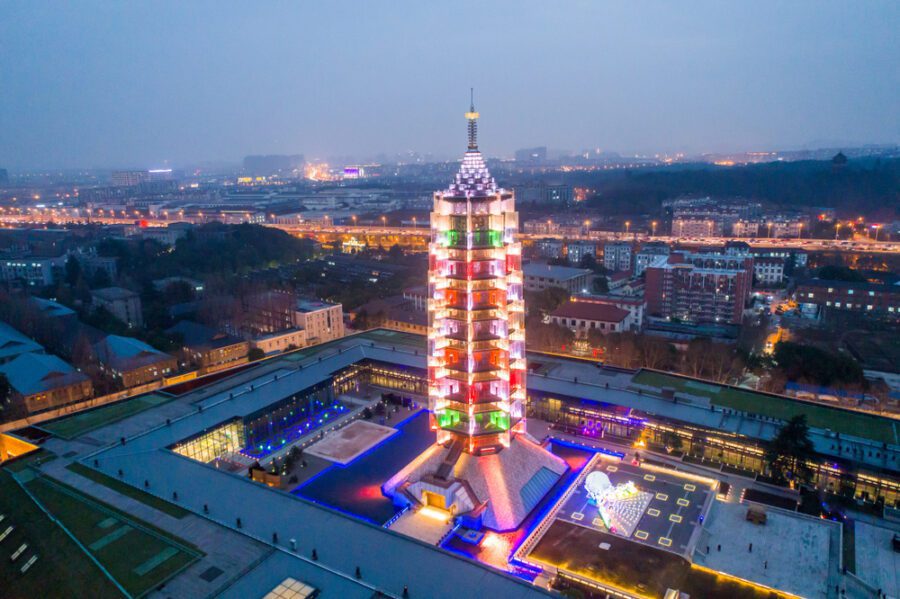
Porcelain Tower, Nanjing, China
A 260ft porcelain tower might not sound like the brightest idea. Yet, surprisingly, this architectural attraction lasted for about 400 years, between the 14th and 19th centuries, before being destroyed by radicals. It showcased a traditional pagoda style, decorated with colorful Buddhist symbolism and lit up by lanterns at night.
In 2015, developer Wang Jianlin donated $153 million to reconstruct the tower in a modern steel and glass construction. Multiple viewing platforms and a futuristic Buddhist-themed museum presents a fresh take on the historic site.
The Hippodrome Theatre, New York City
Walking down to 1120 6th Ave. in New York one hundred years ago, you’d have been greeted by a spectacular theater. The giant 5,697-seat Hippodrome was the work of entrepreneurs Frederick Thompson and Elmer Scipio Dundy, who attracted new middle-class clients with low ticket prices making the theater accessible to all.
The Hippodrome eventually fell due to high maintenance costs. Despite numerous owners trying to revive it, the theatre attraction finally had to close in August 1939 and was demolished that year. An office building can be found here today.
Jeffrey Pine, Yosemite, California
Yes, it’s just a tree, but it’s possibly one of the most photographed trees ever because photographer Ansel Adams made it famous in 1940. With its keeled-over frame, the tree became a popular photo stop for people in Yosemite National Park, showing the effects of more than 400 years of windy climate.
Unfortunately, nature took its course, and, in 1977, the tree finally died. However, it remained upright for some time, looking unique for its bleached wood, until 2003 when it tumbled to the ground. The Jeffrey Pine attraction remains in its spot and still fascinates hikers and photographers, despite no longer towering high.
Love Lock Bridge, Paris, France
Tourists have flocked to the City of Love, expressing their feelings by signing their partner’s names on padlocks and attaching them to the Pont des Arts over the River Seine. This attraction became so popular that the bridge contained one million padlocks weighing around 45 tons at one point.
Because of these symbols of love, part of the fence broke in 2014. City officials began to remove padlocks and replace the bridge’s grills with glass panels. Today, people have started to attach padlocks to lampposts along the bridge instead.
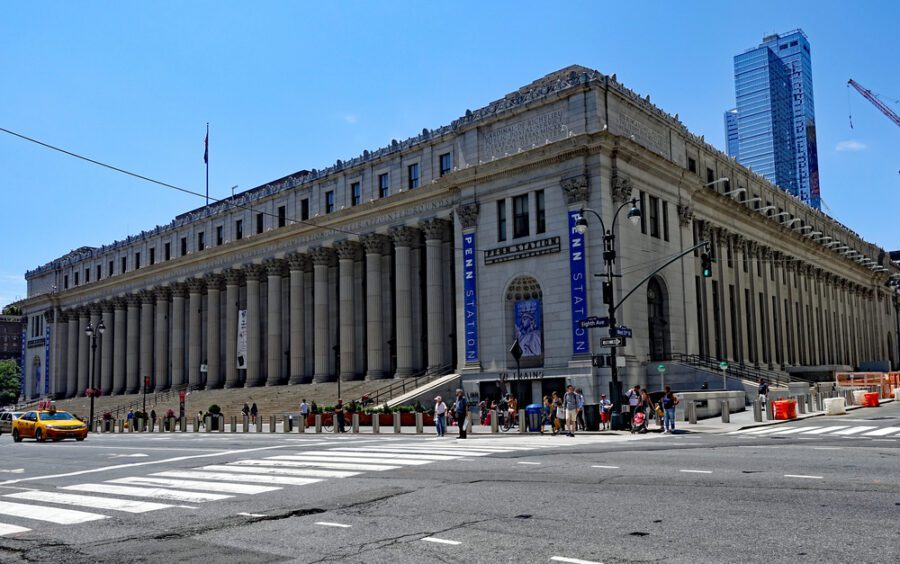
Old Man of the Mountain, New Hampshire
This section of rock bulging out from Franconia Notch might not have been much to look at, But when seen from the north, the rock attraction resembled the profile of an older man, with a clearly defined forehead, nose, lips, and chin.
That’s how it became known as the “Old Man of the Mountain,” an iconic symbol of New Hampshire. After surviving for an estimated 12,000 years, the poor Old Man fell off the mountain one fateful night in 2003. Locals mourned the loss of their mascot and created a memorial in Profiler Plaza at the mountain’s base.
Penn Station, New York City, USA
Penn Station opened in 1910 and was a striking attraction designed in the Beaux-Arts style. It featured pink granite, vaulted glass windows, giant stone pillars, and archways. Unfortunately, like many impressive buildings, it cost a massive sum to maintain.
So in 1962, despite the backlash from many locals, it was demolished. Today’s Penn Station is a far cry from what it used to be, but due to its modest size, the now-increasing number of rail passengers puts a strain on the building, plans have been put in place to expand it.
Royal Opera House, Valletta, Malta
When this Royal Opera House was built in the 1860s, it was a neo-classical gem drawing big-name artists and up-and-coming performances. Sadly, though, it had a short life. In the 1870s, the venue was devastated by fire, and its interior was severely damaged.
The Opera House was quick to restore and reopen shortly afterward, only to be gutted again by direct bombing during World War II. This time, the structure lived in ruin. For years, the attraction stood empty until Italian architect Renzo Piano repurposed the destroyed theater as an open-air venue.
Now, music lovers come to hear the sound of swing, jazz, opera, and much more from within the theater’s remains.
Palmyra, Homs, Syria
This ancient city, built in the third millennium BC, combined Greco-Roman, Persian and Arabian architecture. A UNESCO World Heritage Site, it included ruins of the Great Colonnade, the Temple of Bel, Damascus Gate, and a Roman amphitheater.
Unfortunately, tragedy hit in 2015. the site was seized and partly destroyed by Isis. Between then and 2017, the militants ransacked and blew up parts of this ancient city, including the Arch of Victory and the Temple of Bel. While it no longer holds some of its original characteristics, the attraction has been under restorations funded by UNESCO and is set to reopen in the future.
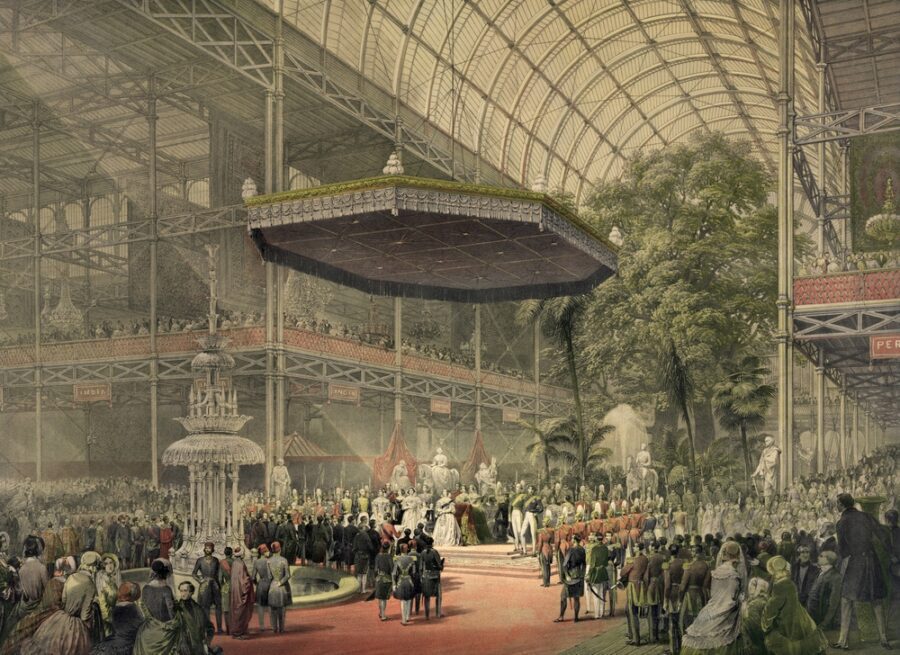
The Azure Window, Gozo, Malta
You might recognize this stunning natural formation from Game of Thrones, The Count of Monte Cristo, and Clash of Titans. The arch had been formed by the collapse of a coastal cave around the 19th century and was a popular photography spot. When heavy storms hit the Maltese archipelago in 2017, the iconic attraction’s demise devastated the world.
However, it wasn’t all bad news. The fallen rock formation has now added to the intrigue underwater, attracting scuba-diving enthusiasts to the area.
Crystal Palace, London, UK
Once a Victorian masterpiece, this impressive glass, and steel structure was built in 1851 in London’s Hyde Park, later being moved to Penge Place, in the south of the capital, where it prevailed for 82 years. In the palace’s youth, its terrain was home to a mind-blowing collection of delights.
A roller coaster, festivals, cricket matches, and even a garden complete with model dinosaurs. But tragically, the attraction was swallowed up by a fire in 1936.
It’s still unknown how the fire was started or if it was intentional, but remnants of the palace, including its terraces, sphinxes, and a massive bust of its designer, Sir Joseph Paxton, can be seen at the site, now known as the Crystal Palace Park.
The Higgins Armory Museum, Worcester, Massachusetts
This Museum in Worcester once held the most extensive collection of armor outside of Europe. The towering art deco attraction resembling a fortress was constructed during the 1920s by John Woodman Higgins, the Worcester Pressed Steel Company owner.
It displayed armor from around the world, including dog armor from the 15th century, and even interactive exhibits where visitors could try on items. After 82 years, the Higgins Armory Museum closed when it couldn’t raise enough money to fund its revenue.
Wall Arch, Arches National Park, Utah
This National Park unwinds across eastern Utah, all being rocky red terrain and stunning natural arches. Over 2,000 arches range from craggy, lush curves to dainty bows that soar across the hot earth below.
The landscape was formed more than 65 million years, but we were reminded of its fragility back in 2008 when Wall Arch, a rugged curve spanning a 71ft gap, fell. Experts concluded that “erosion and gravity” chipped away at the “natural calcium ‘cement'” that had kept the sandstone arch intact since ancient times.
Remains of this attraction are scattered across the Devils Garden hiking trail, so visitors can see the still-impressive rock formation that once held up the departed structure.
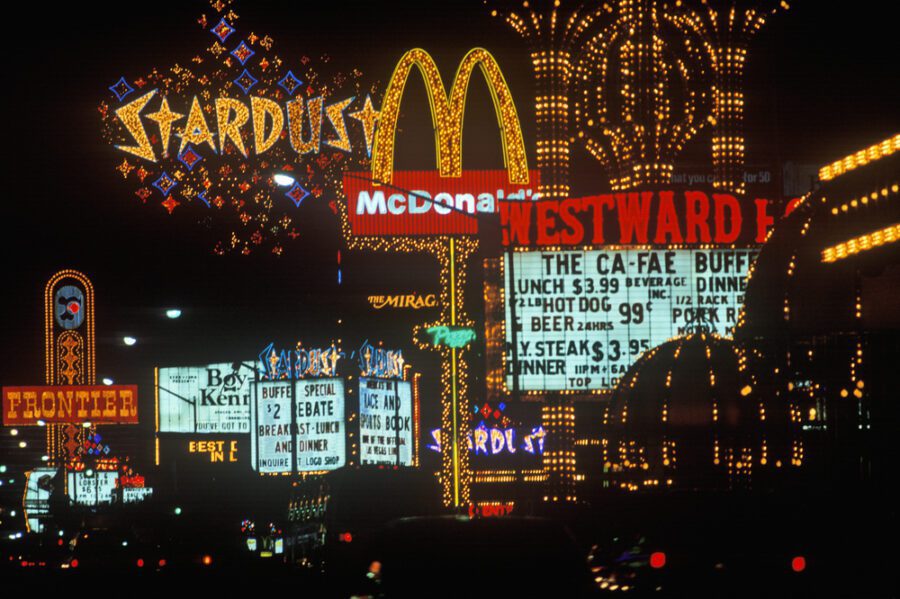
Six Flags New Orleans, Louisiana
Mother Nature was the cause of this New Orleans theme park. It opened in 2000 as Jazzland, a loud, proud tribute to the Big Easy with an entire area themed around Mardi Gras. Six Flags took over in 2003, adding other thrill rides and attractions, but was short-lived.
In 2005, Hurricane Katrina ripped through New Orleans, devastating the theme park and other things around it. Rides were wrecked, attractions were torn apart, and the whole site faded under seven feet of water. When the floodwaters retreated, the spooky skeleton of the park revealed itself and has remained closed off and abandoned ever since.
Stardust Hotel and Casino, Las Vegas, Nevada
Sin City has been known to reinvent itself over the years. So, many iconic hotels have fallen due to rising competition. A perfect example is the Stardust Hotel and Casino, which opened in the late 50s, and was the stomping ground for Frank Sinatra and his Rat Pack.
But, after its glittering youth, the hotel attraction was overshadowed by more prominent, flashier resorts and struggled to keep profits flowing. The hotel finally closed its doors at the end of 2006, but it went out with a bang.
This shot shows fireworks glittering over the hotel as it is imploded in 2007 to develop new developments. Resorts World Las Vegas is currently being constructed and is slated to be finished by 2021.
If you really enjoyed this article, you may be interested in: Did These 10 Extraordinary Mythical Places Actually Exist?














